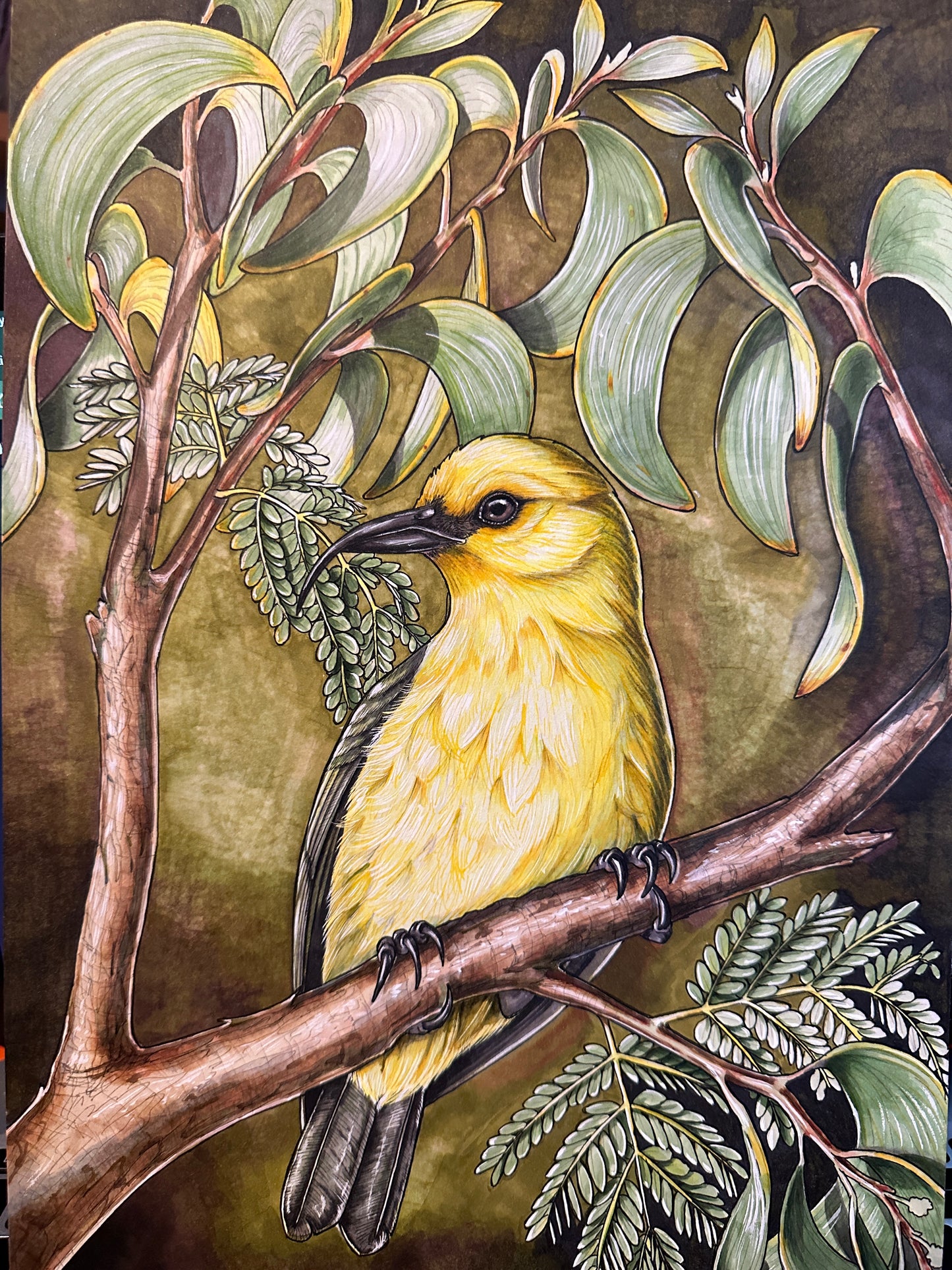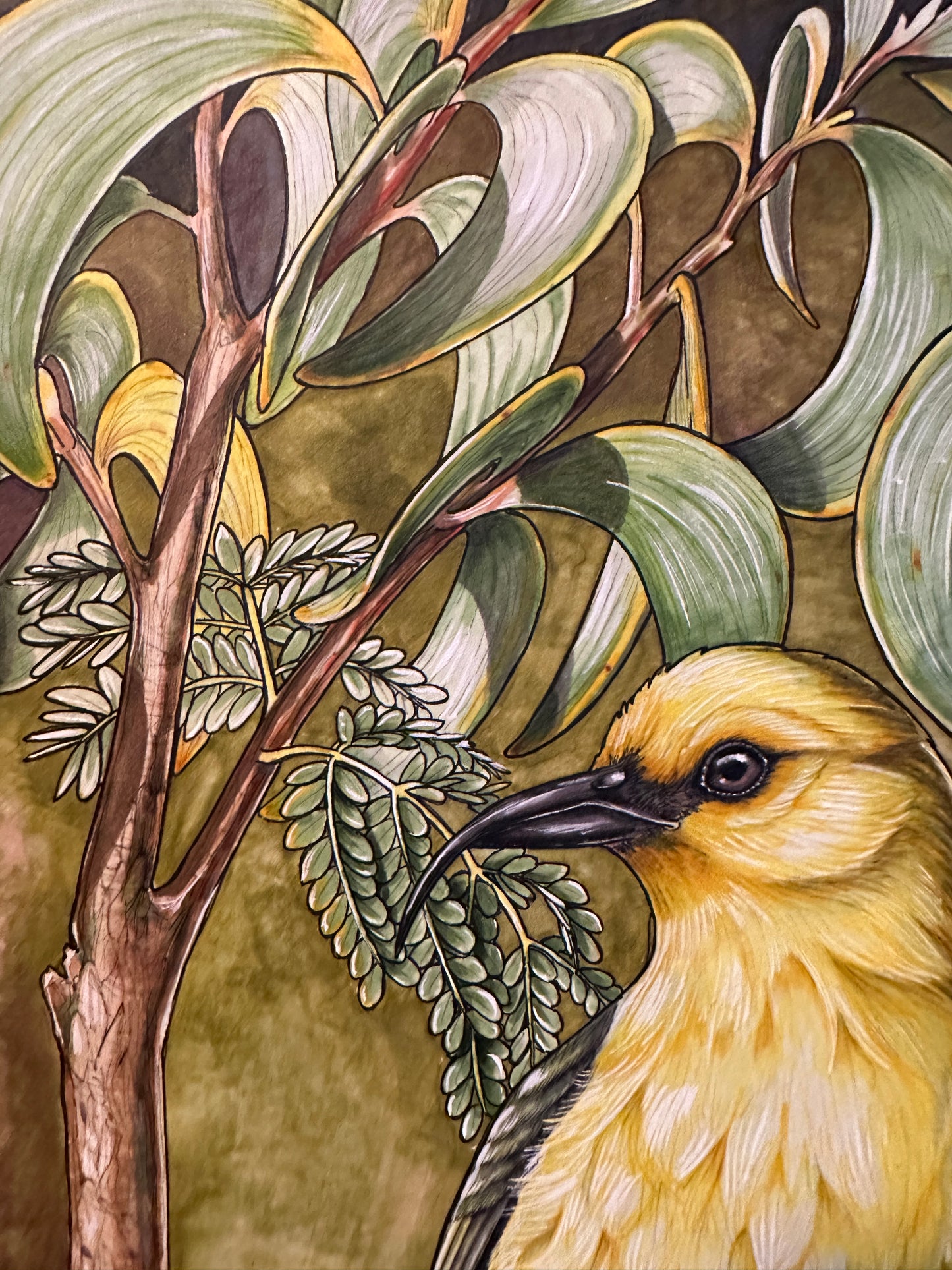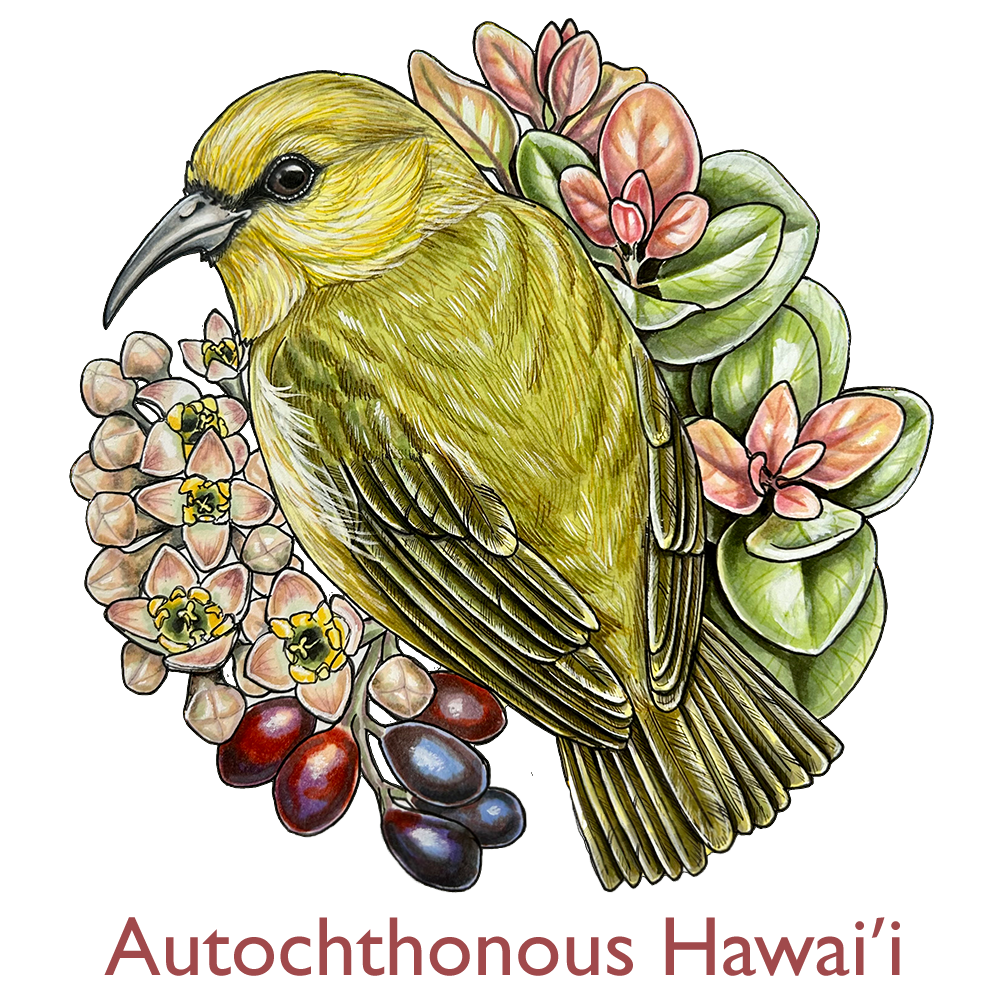Autochthonous Hawai'i
‘Akiapōlā’au and koa original
‘Akiapōlā’au and koa original
Couldn't load pickup availability
Original 8.3"x11.7" illustration.
‘Akiapōlā’au are endemic to Big Island. They are endangered and occupy a small fraction of their former range, like all extant honeycreepers. ‘Aki have a unique bill morphology that allows them to probe and peck at koa and other trees kind of like a woodpecker. They are mostly insectivorous, but can also eat sap from bored holes. Like most honeycreepers, they are seriously threatened by avian malaria, a mosquito-transmitted disease. Climate change is another serious threat as it pushes the habitable elevation of mosquitoes up into the last refugia known for this bird. Promoting mosquito-reduction methods such as Wolbachia are key to ensuring this bird and others don’t become extinct like so many other Hawaiian forest birds.
Koa on Big Island have such fat phyllodes. I’ve never seen O’ahu ones come close in width—I’ve seen Big Island ones nearly as wide as my hand! Koa is the second most abundant forest tree in Hawai’i. It’s characteristic phyllodes—actually extensions of the petiole (leaf stem)—fall vertically, allowing light to penetrate the canopy down into lower levels of forest. The true leaves of koa are bipinnately compound and can be seen especially on younger plants. Koa is also a nitrogen fixer; with the help of specialized root bacteria, they are able to “fix” atmospheric nitrogen into a form usable to plants. This can significantly benefit the forest and its many inhabitants, as nitrogen is often a limiting factor.






